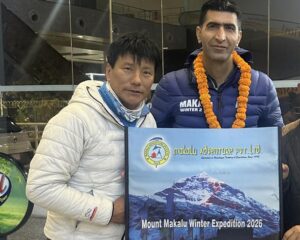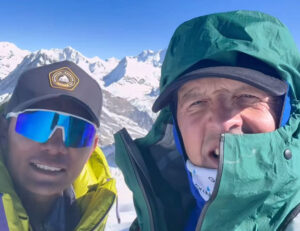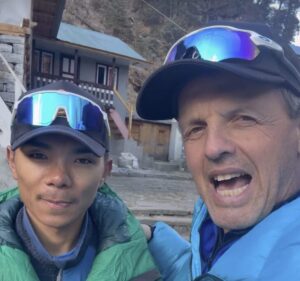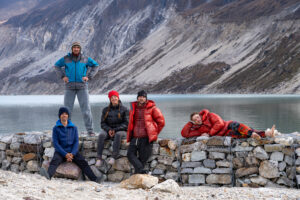Climbers on Cho Oyu will not be able to seize this week’s window of good weather because they have not been able to replace their lost gear. Gelje Sherpa even rappelled into a crevasse to fetch some of the items that blew away before Christmas. He managed to retrieve some down suits and sleeping bags but he didn’t find everything.
“It was quite scary to get into the very place you don’t want to be in,” Gelje wrote.
The climbers have no spare high-altitude clothing and can’t afford to leave anyone on the small team behind. In fact, the six climbing Sherpas plus Kristin Harila and Adriana Brownlee are a marginal force for the extremely long route they are facing.
“Sometimes, things happen that are totally out of your control, and it led to missing a crucial window this week,” Adriana Brownlee wrote.
She added that since it’s so windy, they cannot leave gear at any point along the route.
“We have to climb in one push with very heavy packs and we also have a small team so everyone must carry their own equipment,” she said. “It gets pretty hefty.”

Adriana Brownlee on the glacier at the base of Cho Oyu’s South Side. Photo: Kristin Harila
In fact, this should not be always the case. Last winter, the two Nepali teams pitched three camps along the route. It is true that the jet stream has been particularly low these past two weeks and therefore winds have been particularly strong at altitude. On Manaslu, Alex Txikon wrote how his Camp 1 tent blew away with him and Chhepal Sherpa inside.
Dealing with wind
Winter teams often deal with high winds and use several techniques whenever possible. These include using seracs for protection, building snow walls or caves, and even leaving the tents flattened and secured. A single summit push loaded with all the gear would be extremely hard for such a small team on such a long route. Gelje Sherpa even plans to install a fourth and possibly a fifth camp along the way — more tents, more weight.
That may be one reason why this South-Southwest Ridge has not been used before, especially by alpine-style teams. The route, which includes a huge plateau midway, requires a heavier, more traditional approach like the Nepali teams that attempted it previously have followed.
After all, their ultimate goal is to open the route to commercial teams. Accordingly, they need to be ready to fix as many meters of rope and set up as many camps as needed. A lighter attempt in a single push, with only three camps set so far (and no information on their current state) requires every member of the team, including clients Harila and Brownlee, to pitch in. Not only must they carry heavy loads, they also need to climb longer sections without fixed ropes, either pitch by pitch or short-roped to their Sherpa guides. Both involve a much slower pace.
Meanwhile, on Manaslu, Alex Txikon’s team is taking advantage of the good weather window and reached Camp 2 today.






